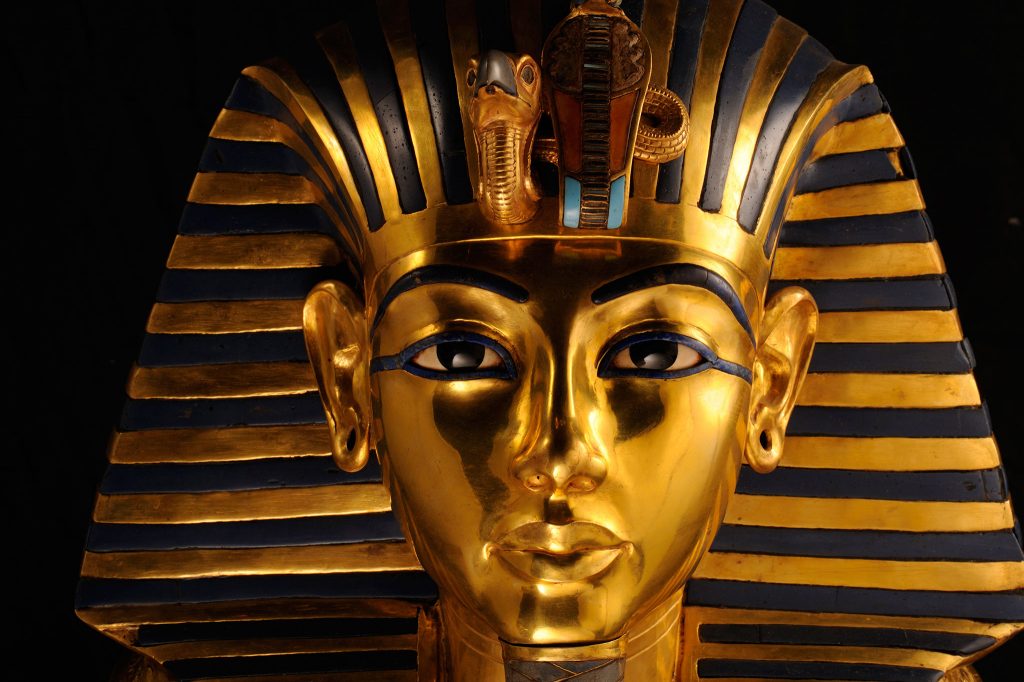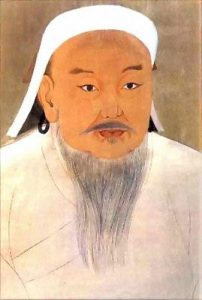Thanks to modern technology, the examination and research into mummified bodies and artifacts from ancient Egypt have answered many questions for scientists and historians alike. What was the culture of these ancient people? Who were their leaders? And what was the process and purpose of mummification? In the twentieth century, the tomb of King Tutankhamen was discovered, and that discovery has answered many of these questions. Thanks to the discoveries of the Ancient Egyptian’s burials of their kings, particularly that of King Tutankhamen, we have learned more and more about the Ancient Egyptian’s history and traditions when it comes to laying the dead to rest.

Scientists and archaeologists say that King Tutankhamen became king at the very young age of nine. However, he may have been no more than a puppet ruler, and the true power behind the throne was said to belong to a man who may have been related to Tut named Ay. Young Tut was a physically frail youth. Through the examination of his body, scientists have found malformations in his feet, and they suspect that the young man had walked with a cane.1 Though he was depicted as fighting in battles and slaying enemies in drawings on the walls of his tomb, there is no actual evidence that this young man participated in any actual battles. However, scholars believe that these depictions merely represent an extension of Tut’s power. It was believed that he married his half-sister, Anthesenpaaton, who was also very young. Though the two had not produced any known heirs, the bodies of two babies were found buried in Tut’s tomb. Archaeologists believe these babies may have been the children of young Tut and his queen.2 He reigned during a period of time known as the New Kingdom. At the young age of eighteen, Tut’s short life and reign over Ancient Egypt had come to an end. The exact cause of Tut’s death remains a mystery; however, scientists believe it may be connected with an infection spread by a broken leg.3
In 1922, the tomb of King Tut was discovered. This finding helped give archaeologists an understanding of the wealth of Egyptian civilization, especially for those living in the upper class. The value of the gold and treasure found in King Tut’s tomb, as was the case for treasures found in other areas of ancient Egypt, surpass that of many others discovered from ancient times. It also has given scientists and researchers much insight into the history, tradition, and science behind the process and purpose of mummification.4
Scholars have discovered that mummifying bodies was tied to the ancient Egyptians’ belief about the afterlife. Egyptians believed that the body was not just a corpse after death, but a resting place for the soul. Osiris, the god of the resurrection and a very respected god to the Egyptians, would judge the soul of the dead.5 Because the Egyptians believed the soul would move on, King Tut’s final resting place was filled with tools and items that the King might need in the afterlife. It contained artifacts such as clothing, musical instruments, jewelry, lamps, chairs, and baskets with food and wine. In addition to the tomb itself, much has been discovered from bodies that were laid to rest so many years ago, including the body of King Tut. The success of the preservation can be accredited to the detail that the ancient Egyptians provided during the process of mummification. Through many years of research and observation, scientists and archaeologists have found that this important practice evolved over time, but it has followed the same basic instructions and procedures.6 After his death, all of Tut’s organs were removed from the body, except the heart, and placed into containers called Canopic Jars. Afterwards, Tut’s body was then covered in a mixture called natron, which consisted of salts that helped inhibit bacterial activity and dehydrate the body. After a little over a month, the mixture of salts was removed from Tut’s body and his cavities were filled with cloth containing resin to give the corpse its shape back. Only after this was the body wrapped with linen, giving it the classic “mummy” appearance. Tut was then placed in a solid gold coffin, and the coffin was then placed in his tomb.7
Traditionally, it was only emperors, kings, and members of the upper class who were mummified, but as time progressed it became a tradition for many members of this ancient society.8
However, because Tut was a king, his resting place was filled with ancient artifacts and treasures in addition to his mummified corpse. Although his reign, and his life, were cut very short, the ancient Egyptians left more than a final resting place for the boy King’s soul when they laid him to rest: they left us, the people of the 21st century, with answers.
- Phillip A. Mackowiak, Diagnosing Giants:Solving the Medical Mysteries of Thirteen Patients Who Changed the World (Oxford: Oxford University Press, 2013), 3. ↵
- Salem Press Biographical Encyclopedia, January 2015, s.v. “Tutankhamen,” by Donald C. Simmons. ↵
- Salem Press Biographical Encyclopedia, January 2015, s.v. “Tutankhamen,” by Donald C. Simmons. ↵
- G. Elliot Smith, Tutankhamen and the Discovery of His Tomb (Routledge: Hoboken, 2013), 1. ↵
- E. A. Wallis Budge, Egyptian Religion : Egyptian Ideas of the Future Life, Routledge Revival (London: Rutledge, 2013), 41. ↵
- Salem Press Encyclopedia of Science, January 2015, s.v. “Mummification,” by James L. Robinson ↵
- Salem Press Biographical Encyclopedia, January 2015, s.v. “Tutankhamen,” by Donald C. Simmons. ↵
- George Hart, Ancient Egypt (New York: DK Publication, 2008), 1. ↵



87 comments
Robert Miller
This is a great article. I wonder what made King Tut so frail? I had read somewhere that he was young but I didn’t know he was that young. I also didn’t know he had a bride and possibly babies. Your article inspired me to do more reading into his life, and death, and see just what other knowledge is out there. If the writings about him being a brave soldier aren’t true, why would somebody need to make it up? What were their motive? I have some reading to do!
Mckenzie Gritton
Very interesting! I can remember reading about King Tut in an egyptology book when I was younger, and that book mentioning that it was believed that King Tut was a frail boy. I didn’t know that it was believed that he was essentially a puppet. That was really interesting to learn. I also liked that you included the mummification process. I never knew how that worked but now I do. Good job!
Madeline Chandler
Such an informative and interesting article! Very captivating. Honestly, I am vaguely familiar with the story of the King Tut and the mummification process, yet I did not know all of the information so in depth. It is so very fascinating that such a scientific process of mummification was established so early. Also, all of the data and historical value the tombs especially King Tut’s tomb bring to history and archeology is so amazing. I loved reading your article. Great job!
Daniel Gimena
The history and mummification of the ancient Egypts has always captivated me. It is so impressive what this early civilization did and the riches they had.
What the discoveries of this mummies have supposed to the gaining of knowledge about ancient Egypt’s civilization has been huge.
Thanks to this discoveries we know almost everything we know today about ancient Egypts. Even if many things remain unknown, I think that this is one of the most exciting things about thinking about Egypts; the unknown, if this people were able to bury their kings with so many riches and build huge pyramids, who knows what other amazing things they were able to do?
Elliot Avigael
It is amazing to think that Egypt’s most famous mummy is only a young boy. When most people think of ancient Egypt, I think King Tut’s face is the first image that comes to mind. I believe that scholars have come to the conclusion that Tut was the product of a seriously incestuous relationship between his parents, who were brother and sister; perhaps his short life can be explained by the difficulties that were brought on by the circumstances of his birth.
I also especially enjoyed your attention to detail regarding the Egyptian mummification process.
Jadyn Evans
I find the mummification process very intresting. I think that the discovery of King Tut’s tomb was fascinating especially from all the data collected that gave better insight into the egyption culture. Studying diffrent tombs and remains gives us better insight and understanding of what life was like for that person so long ago and how it translates to today.
Skyla Bonilla
Before reading this article I knew very little about King Tut and the mummification process however I am glad I decided to read this because it was interesting and informational. I enjoyed learning more about King Tuts background and I had no idea he was only a small and fragile boy since everyone made him out to be so strong and powerful. I think it is exciting that people were able to study this Kings tomb and corpse because we were able to experience ancient Egyptian culture which is something that I feel can be very mysterious.
Eric Hernandez
This article was very informative about the history of king Tut. Learning about the story of the life of king Tut was very interesting and especially how we were able to pull this information from ancient remains. I also think that this type of studying helps us by studying remains to tell how or when someone has died which can help uncover plenty of unsolved crimes.
Sehar Sohail
Absolutely loved this article. When I was in high-school I learned about King Tutankhamun in a play that we did about the ancient Egypt. At that time, I was really small and didn’t really know any of the history behind it. After reading this article I learnt many interesting facts such as King Tut became the king at the age of 8 years and died at the age of 18 years old which is really shocking.
Emilia Caballero Carmona
Hey Analina the title of your article caught my eye. I really liked your article because back in high school I remember learning about the Egyptian mummies and that King Tutankhamen was an important king, but I never really knew his story. I was surprised to read that he died really young at 18 years old and you mentioned that scientists believe it was because of an infection due to a broken leg which was surprising too.